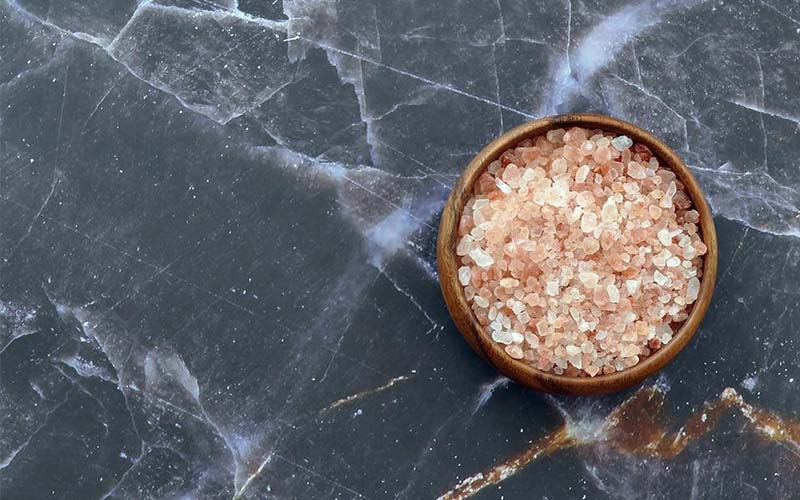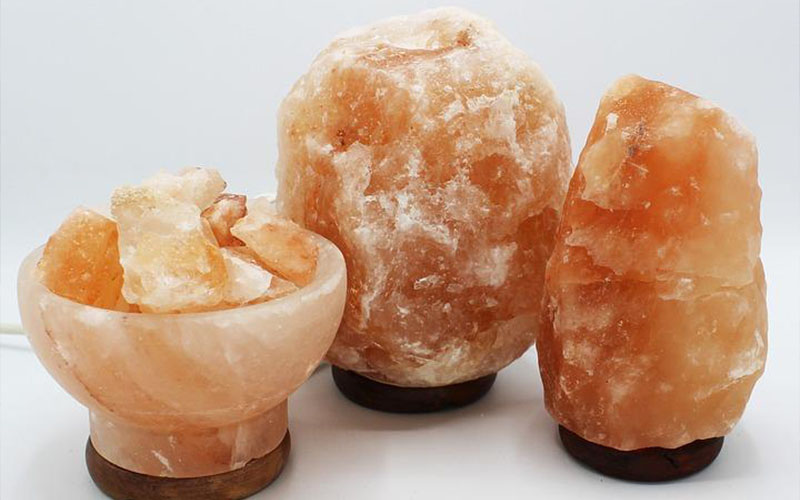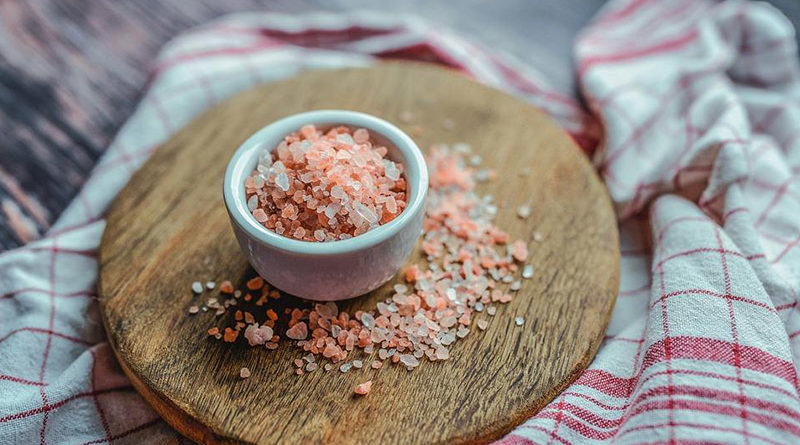Himalayan Pink Salt: Everything You Need to Know
Himalayan pink salt is a light pink rock salt that seems to be a one-stop solution for everything. You can use it for cooking, you can use it for skincare, you can use a block of it as a chopping board, you can even use it as a lamp!
If you haven’t caught on to the many benefits of this wonderful ingredient, you have come to the right place. This article will tell you all that you need to know about Himalayan pink salt – the pros, the cons, how you can use it, what makes it different from regular salt, and the myths that need to be cleared.
So, keep reading to know what the craze for Himalayan pink salt is all about!
What Is Himalayan Pink Salt?

Himalayan pink salt is harvested by hand from the Khewra Salt Mine in the Punjab region of Pakistan. Located near the Himalayas, the Khewra Salt Mine is one of the oldest and largest salt mines in the world.
This salt is chemically similar to regular salt for the most part. It contains 98% sodium chloride. However, the rest of it contains up to 48 trace minerals like iron, magnesium, calcium, potassium, etc. These minerals give this salt its faint pink color.
There is a long list of uses for Himalayan pink salt. You can use it as a healthier substitute for regular salt while cooking, seasoning, and preserving food. You can also use a block of Himalayan pink salt as a cutting board, a serving dish, or a cooking surface for grilling.
Additionally, Himalayan pink salt has anti-inflammatory properties and can be a good addition to your skincare routine. You can also use it as a bath salt. Moreover, you can also find candle holders and lamps made out of Himalayan pink salt.
Benefits of Himalayan Pink Salt
You may have heard people talking about Himalayan pink salt being much better than regular salt. Some people prefer to use it while cooking whereas others use it as a part of their skincare routine. It is time to find out what the hype is about.
Here are some of the benefits of using Himalayan pink salt:
1. Undergoes Minimal Processing
Himalayan pink salt is considered to be more natural than regular salt.
There are two reasons for this. Firstly, Himalayan pink salt is extracted by hand. This is believed to be the reason why Himalayan pink salt retains many of the trace minerals.
Next, it undergoes minimal processing. There are no additives in Himalayan pink salt, which is why some people prefer it to regular salt while cooking. Himalayan pink salt only undergoes a refining process to remove any impurities that may be present.
2. Good Source Of Sodium
It is true that consuming too much sodium can pose risks to your health. However, this does not mean that you should not eat any foods that contain sodium. In fact, it is very important to include sodium in your diet as it aids many important biological processes.
You do not need to worry about consuming too much sodium in Himalayan pink salt. Himalayan pink salt actually contains less sodium per tablespoon than regular salt. The reason for this is that it has larger crystals than table salt.
Here are some of the benefits of including Himalayan pink salt or sodium in your diet:
- Preventing low blood pressure
- Preventing dehydration
- Proper relaxation and contraction of muscles
- Maintaining proper fluid balance
- Maintaining nerve conduction
- Reducing the risk of infection
- Killing harmful bacteria
3. Contains Trace Minerals
The main reason why Himalayan pink salt is preferred over regular salt is that it contains a number of trace minerals that are beneficial for many reasons. Additionally, these minerals are why Himalayan pink salt tastes and looks different from table salt.
The main trace minerals found in Himalayan pink salt are iron, magnesium, potassium, and calcium. Many people use blocks of Himalayan pink salt for cooking, grilling, and serving food so that these minerals are transferred into their food.
However, it is important to note that the quantities of these minerals in Himalayan pink salt are not sufficient enough to help prevent any diseases or improve your health alone.
You should have a balanced diet with other sources of iron, magnesium, potassium, and calcium instead of solely depending upon Himalayan pink salt.
4. Beneficial For Skin
Apart from cooking, many people use Himalayan sea salt because it is good for the skin.
As Himalayan pink salt regulates bodily fluids, prevents dehydration, and soothes sore muscles, it makes your skin look softer and firmer. Additionally, Himalayan sea salt can help in treating skin ailments like acne, psoriasis, eczema.
As it contains magnesium, Himalayan pink salt also has anti-inflammatory properties. It can help prevent breakouts and irritations. You can also use Himalayan pink salt as an exfoliator. You can find Himalayan sea salt scrubs and bath salts.
Myths Related To Himalayan Pink Salt
Evidently, there are many benefits of using Himalayan pink salt. But there are also many myths about what Himalayan pink salt can and cannot do.
It is best that you do not fall for any misinformation. When using Himalayan pink salt, you should know what benefits are proven by science and what is hearsay.
1. Cures Respiratory Problems
There are many claims that Himalayan pink salt is an ancient medicine that can cure ailments and illnesses including respiratory problems.
Some people attempt to cure respiratory problems with salt air therapy, wherein they inhale air infused with Himalayan pink salt. Moreover, it is believed that spending time in Himalayan pink salt caves can improve respiratory health.
However, there is no scientific information that backs these claims. Himalayan pink salt is beneficial for your health in many ways but it cannot cure any illnesses.
2. Purifies The Air

Himalayan pink salt lamps have become a popular decor item. Some people believe that they are also effective air purifiers that can neutralize the air and kill germs.
However, research has shown that this neutralizing effect is only present close to the Himalayan pink salt products. This means that Himalayan pink salt lamps are not effective air purifiers and should not be treated that way.
So, until there is conclusive proof that Himalayan pink salt lamps can help your respiratory problems and cleanse the air around them, you will have to use these gorgeous salt lamps as mere attractive pieces of decor for your bedroom!
3. Radioactivity
There are claims that some of the trace minerals found in Himalayan pink salt are unfit for human use. Some even claim that Himalayan pink salt is radioactive.
You should know that these claims are not true. Himalayan pink salt is completely safe for human use. Moreover, it has been in use for cooking since ancient times.
Additionally, before it reaches us in supermarkets, Himalayan pink salt undergoes a refining process to remove any potential contaminants. Himalayan pink salt also does not contain any added substances, which is why it is becoming an increasingly popular choice over regular table salt for cooking.
Risks of Himalayan Pink Salt
Sodium is responsible for controlling many bodily processes. An increase in sodium levels can pose many risks. As Himalayan pink salt (or any other kind of salt) majorly contains sodium, there are certain risks that come with eating too much of it.
Here are some of the risks posed by overconsumption of Himalayan pink salt or sodium:
1. Hypernatremia
Although hypernatremia is a relatively rare condition, it can be caused by an excessive amount of sodium in the blood.
Since Himalayan pink salt majorly contains sodium, people prone to such problems should stay mindful of how much salt they consume.
2. Bone Disorders
Research shows that the presence of too much sodium in the body can cause the calcium levels in your body to drop.
This can make your bones weak and you will be vulnerable to developing bone diseases. However, there is still a need for more research to establish this link between bone disorders and consuming too much salt.
3. Heart Diseases
Although the ties between eating too much salt and the onset of cardiovascular diseases are not conclusively proven, there is an indirect link between the two.
The leading cause of heart disease is high blood pressure, which is caused by excessive sodium consumption. So, you should be cautious about adding too much Himalayan pink salt to your diet.
4. Kidney Problems
Consuming high amounts of sodium can overburden your body. Your body will struggle to remove excess sodium from the kidneys and release it into the bloodstream.
This can result in increased blood pressure, which in turn contributes to the onset of chronic kidney disease. Therefore, you should be mindful of how much sodium you consume.
Should You Stay Away From Sodium?
It is important to note that the above health risks are not solely caused by eating too much Himalayan pink salt. Any other kind of salt can add to your sodium levels.
However, these problems are only caused if your sodium intake is more than the required amount. This does not mean that you should totally eliminate sodium.
Not eating enough sodium can also cause many problems, which is why you should make sure that you incorporate it into your diet. It can affect your heart health, your blood pressure, your hydration levels, and more.
Difference Between Himalayan Pink Salt and Regular Salt
Now, let’s understand how Himalayan Pink Salt differs from regular salt:
| Category | Regular Salt | Himalayan Pink Salt |
| Composition | Sodium chloride | Sodium chloride and trace minerals |
| Health Benefits | Less than Himalayan Pink Salt | More than Regular Salt |
| Color | White | Pink |
| Uses | Cooking | Cooking, skincare, decor |
1. Composition
The main and most important difference between Himalayan pink salt and regular salt is their composition. Regular salt only contains sodium chloride whereas Himalayan pink salt is composed of 98% sodium chloride and up to 48 trace minerals.
2. Health Benefits
As Himalayan pink salt has additional minerals, it is healthier than regular salt.
Like explained earlier in this article, some of the benefits that these trace minerals add to Himalayan pink salt are soothing sore muscles, improving fluid regulation, etc.
Some of the main trace minerals in Himalayan pink salt are iron, calcium, potassium, magnesium, etc. Needless to say, these minerals are not present in regular salt and neither are the additional health benefits.
3. Color
Regular salt has a white color whereas Himalayan pink salt has a gorgeous light pink color that makes it distinct. Again, the additional trace minerals are to thank for giving Himalayan pink salt the color it sports.
4. Uses
Cooking is not possible without using regular salt. However, Himalayan pink salt has more uses than just adding a dash of flavor and health benefits to a dish.
Himalayan pink salt can be used as an exfoliator for your skin. It is not uncommon to find bath salts and face scrubs made using Himalayan pink salt.
Additionally, blocks of Himalayan pink salt are used for a variety of purposes. They are used as lamps, candle holders, jewelry holders, etc.
Some people also like to use Himalayan pink salt blocks as cutting boards, serving dishes, and cooking boards for preparing, grilling, and seasoning food. Not only will Himalayan pink salt boards look beautiful as utensils in your kitchen, using them to prepare and serve food will also make the minerals rub off on the food.
Final Thoughts
Himalayan pink salt is a wonderful ingredient that is shrouded with mystery. Now that you know all the pros and cons, and what myths to not believe, you are ready to use Himalayan pink salt however you like.
You could use it as an ingredient in your dishes or as a kitchen utensil to avail the many health benefits it brings. Or you could use it as a part of your skincare regimen to get soft, clear skin. You could also use blocks of Himalayan pink salt as beautiful decor pieces in your home!
So, what are you waiting for?



